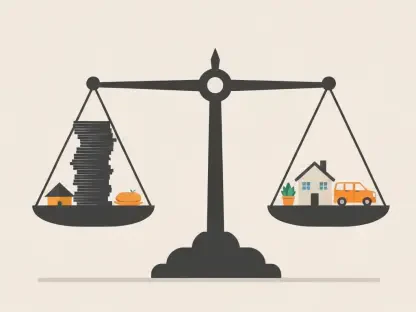In an era where financial demands often compete with the desire to make a positive impact, finding room in a budget for charitable giving can feel like a daunting task, especially during the holiday season when appeals for donations seem to multiply. Many individuals grapple with the question of how to balance personal financial goals with the aspiration to support meaningful causes. The decision to give is deeply personal, shaped by factors such as income levels, cultural values, and individual priorities. Financial experts note that attitudes toward charity vary widely—some people are deeply committed to regular contributions, while others may give sporadically or not at all. Influences like religious beliefs or potential tax benefits often play a significant role in these choices. This article explores practical steps to integrate charitable giving into a budget, ensuring that generosity aligns with financial stability. By following structured approaches, it’s possible to contribute to causes that matter while maintaining a healthy financial foundation.
1. Assess Your Financial Situation
Before committing to any donation amount, taking a comprehensive look at personal finances is a critical first step. This involves reviewing income, expenses, and existing financial obligations to get a clear picture of what’s feasible. Consider outstanding debts, such as mortgages or student loans, alongside regular cash flow needs for daily living. Financial stability should be the priority—ensuring that basic needs and long-term goals, like saving for retirement, are not compromised. Experts emphasize that only when a solid financial footing is established should the focus shift to increasing charitable contributions. This careful evaluation helps prevent overextending resources, which could lead to stress or debt. A thorough assessment acts as the foundation for any giving plan, setting realistic boundaries for what can be allocated to charity without risking personal financial health.
Once the financial landscape is clear, the next consideration is determining how much can be comfortably set aside for donations. If the budget shows room for giving, that’s an encouraging sign to proceed with planning contributions. However, it’s vital to avoid making impulsive decisions that might jeopardize other priorities. For instance, if monthly expenses are barely covered, it may be wise to start with smaller amounts or explore non-monetary ways to give. The goal is to strike a balance where helping others doesn’t create personal hardship. Financial advisors often caution against taking on additional debt to fund charitable efforts, as this defeats the purpose of sustainable giving. By grounding the decision in a realistic view of one’s financial situation, it becomes easier to set donation goals that are both meaningful and manageable over time.
2. Determine a Feasible Donation Amount
With a clear understanding of personal finances, the next step is to choose a donation figure that fits within the budget without causing strain. There’s no universal percentage or amount that suits everyone, so the focus should be on what feels right for individual circumstances. This might mean allocating a fixed monthly sum or a percentage of income that doesn’t disrupt other financial goals. Consistency can be a helpful strategy—deciding to give regularly to a trusted organization, like a local food bank, allows for better planning and integration into the budget. This approach ensures that giving becomes a predictable part of financial management rather than a sporadic expense that could throw off other plans.
Additionally, setting aside a small reserve for unexpected donation requests throughout the year can prevent budget disruptions. These might include sudden appeals from friends, community drives, or emergency relief efforts following events like natural disasters. Having a buffer ensures that such contributions don’t require dipping into funds earmarked for essentials. Planning ahead for both regular and impromptu giving helps maintain financial control while still allowing flexibility to respond to urgent needs. The key is to establish an amount that aligns with personal values and financial capacity, ensuring that the act of giving remains a positive and sustainable choice rather than a source of stress.
3. Select Trustworthy Recipients
Once a donation amount is determined, ensuring that the funds go to legitimate and impactful causes is essential. Scammers often exploit the generosity of well-meaning individuals, particularly after high-profile events like natural disasters, using fake websites or fraudulent calls to solicit funds. Vigilance is necessary to protect hard-earned money from such schemes. Before contributing, take a moment to verify the credibility of the organization. Resources like GuideStar.org and CharityNavigator.org provide valuable tools to research and confirm the legitimacy of charities, often with just a few clicks. This step helps ensure that donations reach the intended beneficiaries and support genuine efforts.
Beyond avoiding scams, selecting recipients that align with personal values adds meaning to the act of giving. Whether it’s supporting a local shelter, an environmental initiative, or a global health cause, choosing organizations that resonate on a personal level can make the contribution more fulfilling. It’s also wise to avoid clicking on unsolicited links in emails or messages requesting donations, as these are common tactics used by fraudsters. Taking the time to research and select trustworthy recipients not only safeguards financial contributions but also builds confidence that the support provided is making a real difference in the community or cause being championed.
4. Consider Non-Monetary Contributions
For those whose budgets may not allow for financial donations, exploring non-monetary ways to give can be an equally impactful alternative. Donating time through volunteering offers a meaningful way to support causes without straining personal finances. Opportunities abound, from helping at a community event to serving meals at a local pantry. These efforts often create a direct connection to the cause, fostering a deeper sense of involvement. Many organizations welcome such contributions, recognizing that hands-on support is often as valuable as monetary gifts. This approach allows individuals to give back while keeping their financial plans intact.
Another avenue for non-financial giving includes donating goods or leveraging specific skills. Contributing items like clothing, food, or household supplies to community drives can address immediate needs. Additionally, virtual volunteer roles that utilize professional expertise—such as graphic design or data analysis—can be found on various charity platforms. These skill-based opportunities enable individuals to make a difference from anywhere, accommodating busy schedules. Exploring these options broadens the scope of how one can contribute, proving that generosity isn’t limited to financial means but can be expressed through time, effort, and resources.
5. Integrate Giving Into Your Overall Budget
Incorporating charitable donations into a broader financial plan ensures that giving doesn’t disrupt other priorities. For individuals committed to a specific percentage of income—such as 10% for religious reasons—adjusting other budget categories becomes necessary. This might involve reevaluating discretionary spending or tightening allocations for non-essential items to accommodate the donation goal. Financial advisors often suggest frameworks like the 50/30/20 rule, which divides income into needs, wants, and savings, as a guide to maintain balance. Ensuring that an emergency fund is in place and debts are being managed is also critical before prioritizing charitable contributions.
Beyond immediate budgeting, long-term financial goals should remain in focus when planning to give. This includes securing adequate insurance coverage to protect against unforeseen events and setting aside savings for future needs. Charitable giving should complement, not compete with, these essentials. By viewing donations as a planned expense rather than an afterthought, it’s possible to align generosity with personal financial health. This structured approach helps sustain giving over time, making it a consistent part of life without sacrificing stability or progress toward other objectives.
6. Evaluate Tax Benefits of Donations
Understanding the tax implications of charitable giving can enhance the impact of contributions, even if tax savings aren’t the primary motivation. Strategizing donations to maximize deductions can make a significant difference. For example, bundling contributions into a single year—such as donating $20,000 in one year instead of $10,000 annually—may push the total above the standard deduction threshold, yielding greater tax benefits. Consulting with a tax professional or reviewing resources on the IRS website can provide clarity on how to structure giving for optimal advantage while staying compliant with regulations.
Additional options, like using donor-advised funds or making direct contributions from an IRA for those over 70½, offer further ways to minimize tax burdens while supporting causes. These methods can stretch the value of donations, allowing more resources to reach the intended recipients. Planning contributions with tax benefits in mind requires forethought, so avoiding small, spontaneous donations in favor of a consolidated strategy is often recommended. This thoughtful approach not only supports charitable goals but also aligns with broader financial planning, creating a win-win scenario for both giver and recipient.
7. Planning for Sustainable Generosity
Reflecting on past efforts to integrate charitable giving into budgets, it became evident that careful planning was the cornerstone of success. Many individuals found that assessing their financial health before committing to donations prevented overextension and preserved personal stability. Choosing trustworthy organizations and considering non-monetary contributions proved to be effective ways to give back without financial strain. These strategies allowed for meaningful impact while maintaining a balanced approach to personal finances.
Looking ahead, the focus should be on creating a sustainable giving plan that evolves with changing circumstances. Regularly revisiting financial goals and donation amounts ensures that generosity remains feasible. Exploring new causes or volunteering opportunities can keep the spirit of giving fresh and relevant. By embedding these practices into long-term financial habits, the act of supporting others becomes a fulfilling and enduring part of life, benefiting both the community and the giver in profound ways.









